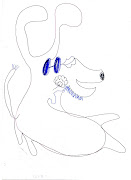Hi girls, my reflection bit. not really sure how it's supposed to be, but i think we can further edit and summarise. 347 words.
love, kaela
Belbin’s team roles
Over the term our group has been working together efficiently, having regular meetings, delegating tasks and completing them according to the time logbook.
Belbin’s team roles model points out nine team roles that should be engaged to heighten team performance. (McShane and Travaglione, 2007)Within our group, we identified how each member played a certain role from the model, such as the conductor, team worker, implementer and monitor evaluator. Despite that, we did not limit ourselves to specifically fulfilling that role, but instead engaged in an overlapping of roles to further encourage and advise one another.
Initially there were a few negative norms such as conflicting ideas and the problem of punctuality. However, we have learnt to turn our setbacks into opportunities. With regards to conflict in ideas, we have decided to not only reach a state of compromise, but a state of problem-solving, where we carefully evaluate and think of ways to integrate and expand on every suggestion made.
On the other hand, we built up positive norms such as being disciplined, completing respective tasks assigned by the date set in our agenda. We also practice an even distribution of tasks, where every member is given the opportunity to express their opinions. Members also specially made time and changed plans to be able to make it for meetings.
Additionally, in order to increase the efficiency of communication, our group created a blog where we regularly update our tasks, the logbook and ask for advice or suggestions. Being able to view the other members’ work while working on an individual task gives us the ability to work in sync effectively.
Team cohesiveness
Our group’s level of team cohesiveness has been increasing due to some factors. Three of the members were friends of many years hence there was member similarity, promoting better understanding. Also, relative to other groups of six, our group of five was small and hence it is easier to reach a state of agreement. Our members sit together during lectures and engage in active group discussions that the lecturer presents, hence there is constant member interaction.
Friday, August 31, 2007
Subscribe to:
Post Comments (Atom)

No comments:
Post a Comment